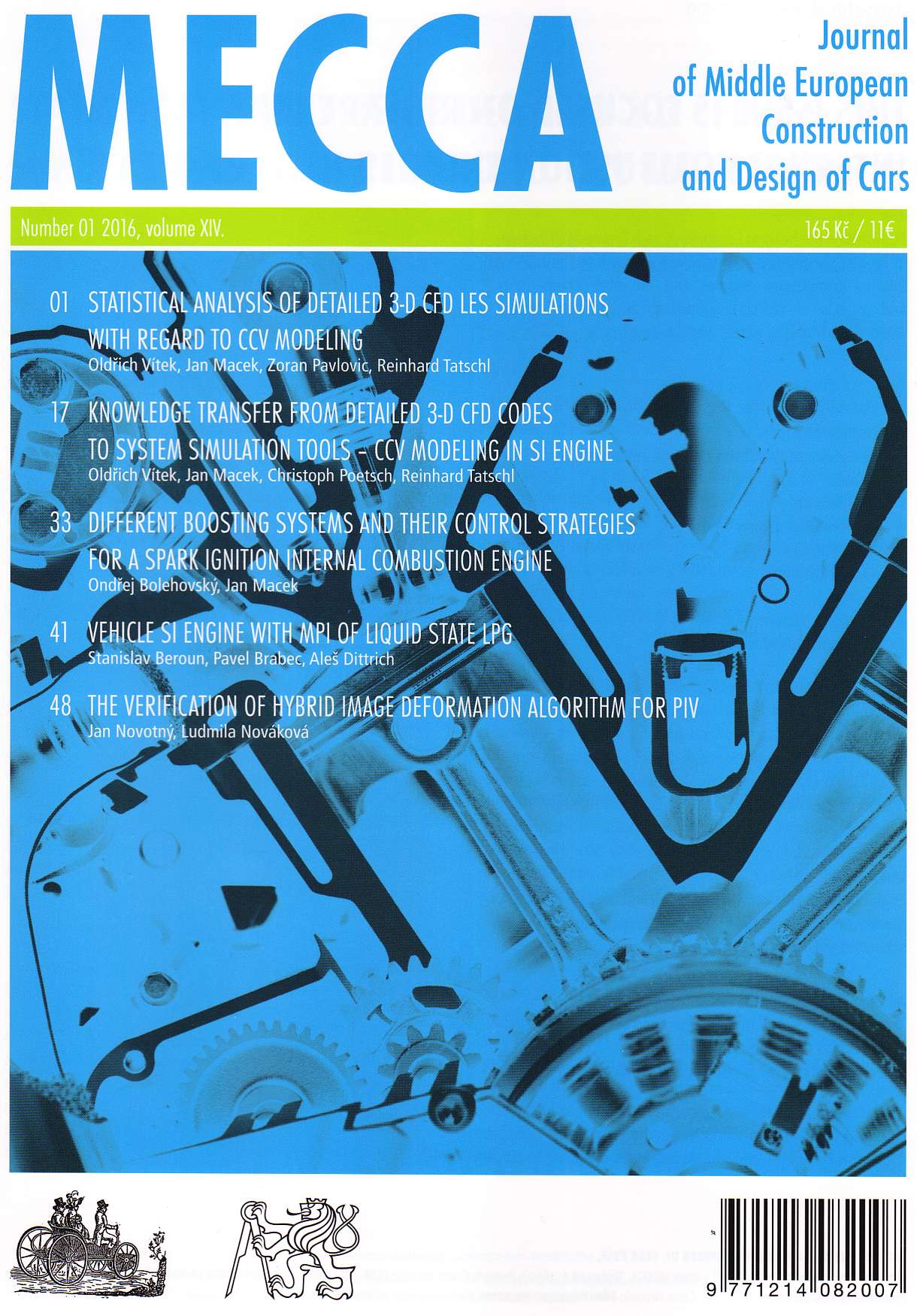VEHICLE SI ENGINE WITH MPI OF LIQUID STATE LPG
Abstract
The first part of the article reviews the possible methods for LPG and air mixture forming (injection of gaseous or liquid state LPG) and their influence on the operating properties of an SI engine. The next chapter explains the processes that take place when liquid state LPG is injected into the air flow of an internal combustion engine intake manifold. A simplified calculation is used to show that the injection of liquid state LPG is associated with extreme low temperature of the LPG injected into intake manifold and with ice formation on the outlet nozzle. The article sets out the design of an end part injector (EPI) for liquid state LPG that reduces the risk of icing of the outlet nozzle. The results of experimental research indicate very good operational properties for a vehicle SI engine with the combustion mixture formed by the injection of liquid state LPG into the engine intake manifold. The calculation results are confirmed by recording plots of LPG pressure inside the end part of injector (EPI) and the temperature on the outlet nozzle (ON) of the LPG injector. Visual inspection of injection of liquid state LPG into the intake manifold clearly supports the performed measurements. The conclusions summarize the knowledge gained from the laboratory investigation of liquid state LPG injection into an engine intake manifold.
V úvodní části článku jsou připomenuty možné způsoby tvoření směsi LPG se vzduchem (vstřikování LPG v plynném nebo kapalném stavu) a jejich vliv na provozní vlastnosti zážehového motoru. Další kapitola vysvětluje děje, které působí na průběh vstřikování LPG v kapalném stavu do nasávaného vzduchu v sacím potrubí motoru. Pomocí zjednodušeného výpočtového modelu je ukázáno, že vstřikování LPG v kapalném stavu je principiálně spojeno s extrémně nízkými teplotami LPG na výtoku ze vstřikovací trysky a s rizikem tvoření námrazy na výtokové trysce a příp. i v sacím potrubí. V článku je ukázána konstrukční úprava koncové části vstřikovače LPG s potlačeným rizikem pro tvoření námrazy. Výsledky experimentálního výzkumu na zkušebním zážehovém motoru s tvořením směsi vstřikováním LPG v kapalném stavu ukazují velmi kvalitní vlastnosti motoru. Měření průběhu tlaku LPG v koncové části vstřikovače a měření teplot na výtokové trysce potvrzují výsledky provedených výpočtů. Měření na zkušebním motoru doplňují vizualizace vstřikování LPG do sacího potrubí. V závěru článku je souhrn poznatků z výzkumu tvoření směsi vstřikováním LPG v kapalném stavu do sacího potrubí motoru.
Downloads
Published
Issue
Section
License
Copyright (c) 2016 Stanislav Beroun, Pavel Brabec, Aleš Dittrich

This work is licensed under a Creative Commons Attribution 4.0 International License.
Authors who publish with this journal agree to the following terms:1. Authors retain copyright and grant the journal right of first publication with the work simultaneously licensed under a Creative Commons Attribution License that allows others to share the work with an acknowledgement of the work's authorship and initial publication in this journal.
2. Authors are able to enter into separate, additional contractual arrangements for the non-exclusive distribution of the journal's published version of the work (e.g., post it to an institutional repository or publish it in a book), with an acknowledgement of its initial publication in this journal.
3. Authors are permitted and encouraged to post their work online (e.g., in institutional repositories or on their website) prior to and during the submission process, as it can lead to productive exchanges, as well as earlier and greater citation of published work (See The Effect of Open Access).

